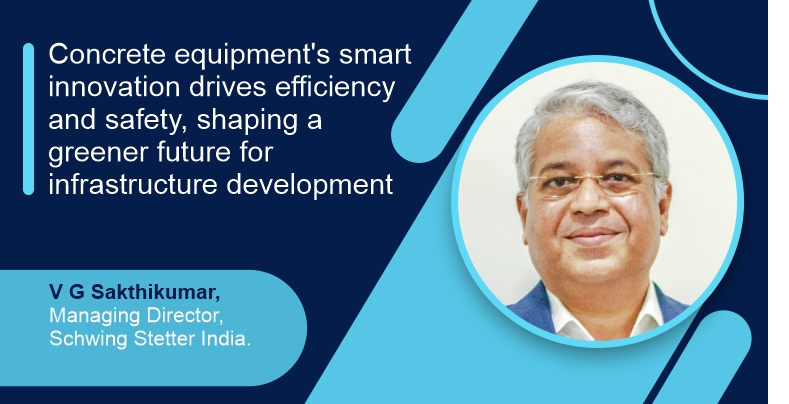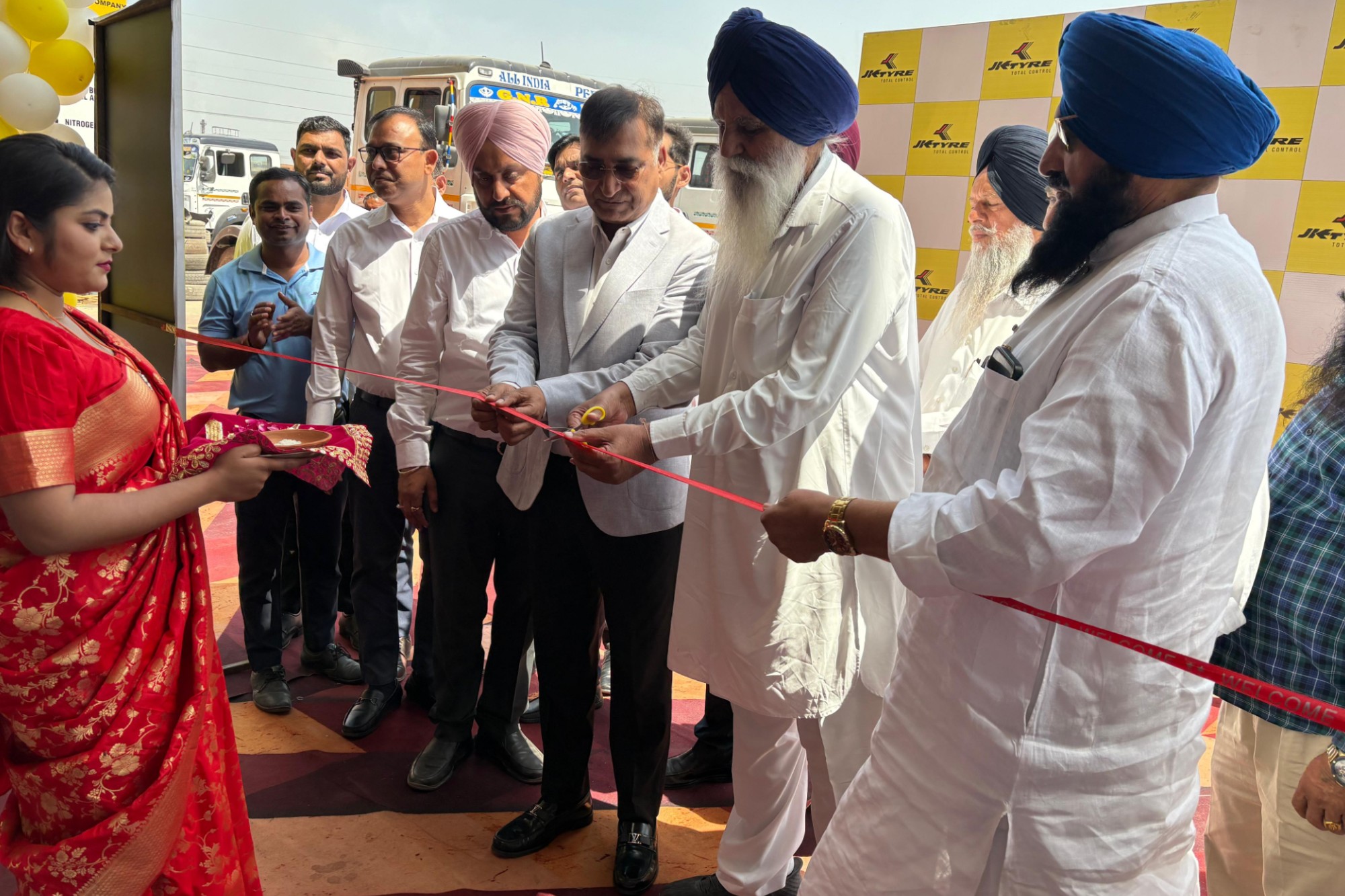Schwing Stetter India to introduce electric shotcrete equipment in 2024
By Edit Team | September 7, 2023 12:25 pm SHARE

Concrete equipment’s smart innovation drives efficiency and safety, shaping a greener future for infrastructure development.
V.G. Sakthikumar, MD of Schwing Stetter India, talks about concrete equipment developments, including automation, safety precautions, and the possibilities for battery-powered technology in shaping infrastructure projects.
What are the current trends and projections for the concrete equipment industry?
The concrete equipment industry is expected to grow steadily in the post-pandemic era as demand for infrastructure development increases. The industry is also moving towards more mechanisation and automation, improving construction projects’ efficiency and productivity.
What are the emerging technological innovations offered by your company in your range of machines?
Schwing Stetter is a leader in developing innovative technologies for the concrete industry. Some of our products include IOT-enabled concrete pumps, mixers, and loaders that allow easy logistics monitoring and fleet management; boom pumps with easy mode and single-side pumping features; and concrete mixers with spirals that ensure better homogeneity and higher mix strength. We also offer solutions for saving cement, fuel, and time, such as open-loop hydraulic systems, optimised prime movers, fast erection batching plants, and in-house automation with CRM and IOT capabilities. Our products are designed to meet customers’ needs and deliver high-quality performance.
What specific features have contributed to their improved on-site performance?
Some specific features that have contributed to our improved on-site performance are IOT-enabled fleet management, easy mode in boom pumps, single-side concrete pumping, optimised spiral design in concrete mixers, faster erection and maintenance of batching plants, and in-house automation solutions.

What are the most critical safety concerns and project deadline challenges faced by equipment owners and project managers?
Some of the most critical safety concerns and project deadline challenges encountered by equipment owners and project managers are accidents and injuries due to human error or equipment failure; delays and disruptions due to weather conditions or technical issues; theft and vandalism of equipment or materials; and legal disputes or contractual violations.
Which best practices or innovations have been introduced to address these issues effectively?
The best practices or innovations introduced to address these issues effectively are safety protocols and guidelines for operators and workers, contingency plans and backup systems for emergencies, security measures and insurance policies for equipment and materials, and dispute resolution mechanisms and contractual clauses for legal matters.
What are the industry’s potential barriers and incentives for adopting battery-operated equipment?
Schwing Stetter India will have a completely electric concrete shotcrete machine in the market in 2024. Some potential barriers and incentives for wider adoption of battery-operated equipment in the industry are high initial costs and limited availability of batteries; a lack of charging infrastructure and standardisation; environmental benefits and lower operational costs; government subsidies and tax incentives; and customer preferences and market trends. Battery-operated equipment might significantly shape future infrastructure projects by reducing carbon emissions and noise pollution, increasing energy efficiency and reliability, and enhancing user convenience and comfort.
Cookie Consent
We use cookies to personalize your experience. By continuing to visit this website you agree to our Terms & Conditions, Privacy Policy and Cookie Policy.


































-20240213125207.png)

























